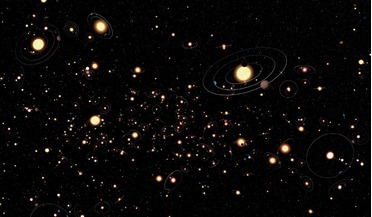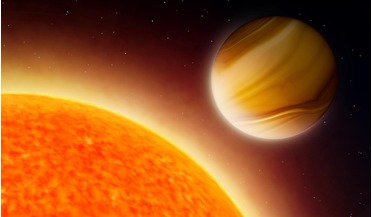 11 March 2020
Ultra-hot exoplanet literally rains iron say astronomers
11 March 2020
Ultra-hot exoplanet literally rains iron say astronomers
.... This puffed-up planet is unflatteringly referred to as a bloated-hot Jupiter, because it is nearly twice the size of our own gas... temperature and large radii, that give rise to these hot, bloated exoplanets. Another curious condition of these type ...
 May 2018
PLATO the habitable zone explorer
May 2018
PLATO the habitable zone explorer
...to exist, and so hadn’t been looking for. These massive, short period planets are now generally referred to as ‘hot Jupiters’, and the announcement of 51 Pegasi b heralded a flood of new exoplanet discoveries. Though radial velocities were the method...
 11 December 2019
Water abundance lower than expected on exoplanets
11 December 2019
Water abundance lower than expected on exoplanets
... from 'mini-Neptunes' of nearly 10 Earth masses to 'super-Jupiters' of over 600 Earth masses - and temperature, from nearly 20... trend in H2O abundances, from mini-Neptunes to hot Jupiters, is significantly lower when compared with the metal abundances...
 26 April 2016
Sulphur chemistry could be the key to clouds on many exoplanets
26 April 2016
Sulphur chemistry could be the key to clouds on many exoplanets
... planets has hindered this line of investigation. Not only that, but the first exoplanet photochemical models of hot Jupiters, showed that small hydrocarbons would not condense in their solar composition atmospheres, adding weight to the hypothesis...
 07 March 2016
Researchers show how water content in protoplanetary discs can affect planet formation
07 March 2016
Researchers show how water content in protoplanetary discs can affect planet formation
... studies have focused on the abundances of oxygen and carbon in hot Jupiters to determine the location in the disc where the planet accreted,...abundance is low. Their results also imply that hot and warm super-Earths found in exoplanet surveys could...
 29 March 2016
To build super-Earths near host star 'dead zones' are required say researchers
29 March 2016
To build super-Earths near host star 'dead zones' are required say researchers
... could have an occurrence rate as high as 50% or more compared with hot Jupiters that in turn are only found around about 1% of stars, are formed... planets then migrate inwards and stay put, whereas hot super–Earths and giant planet cores formed in the...